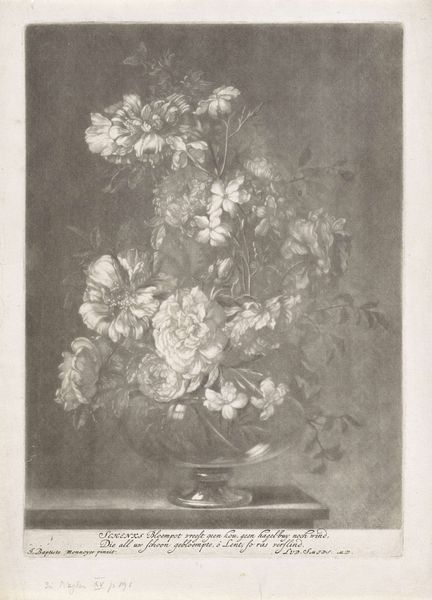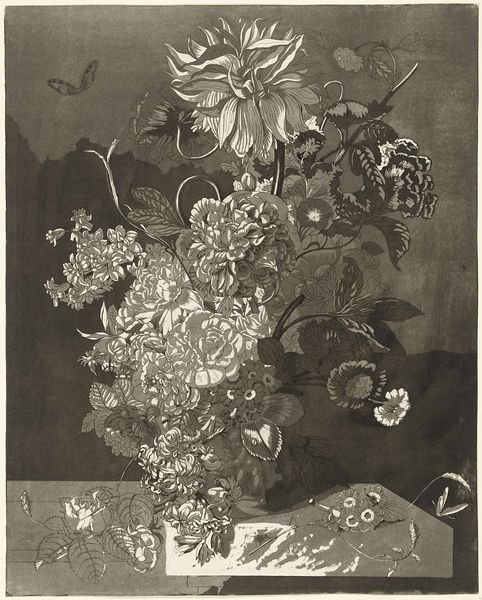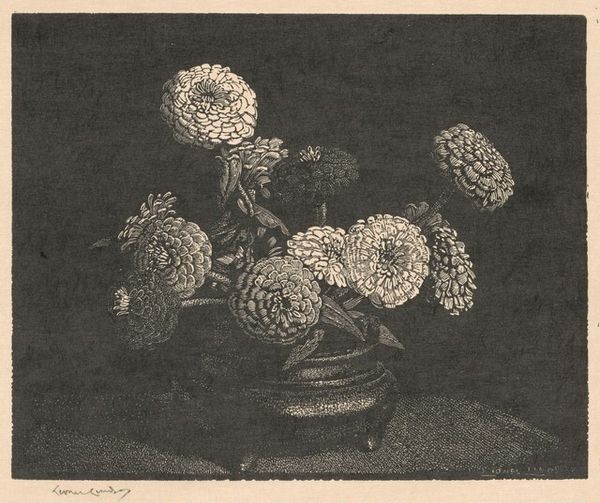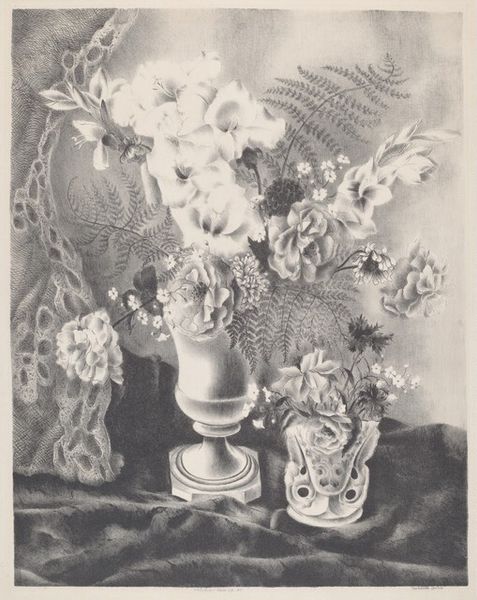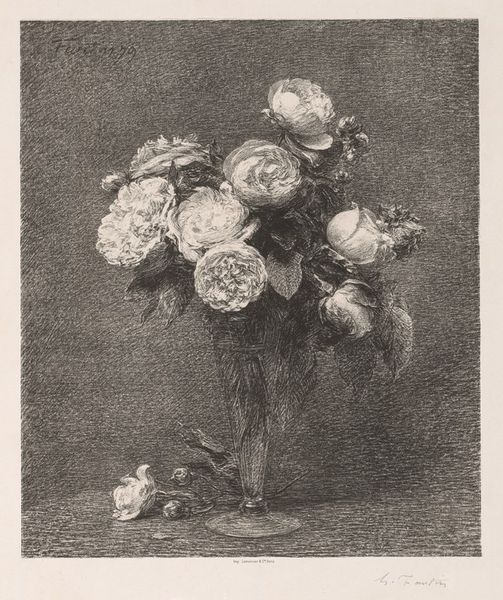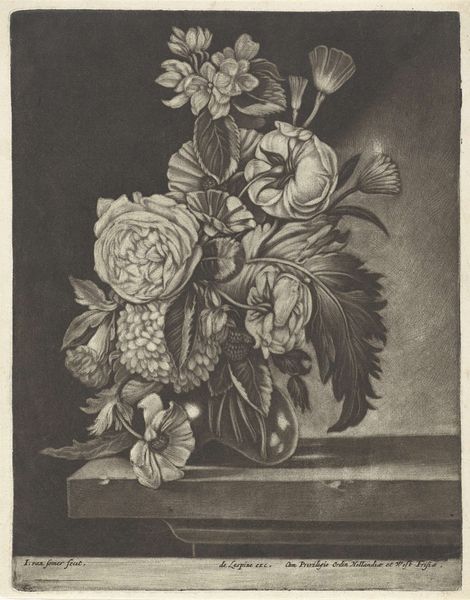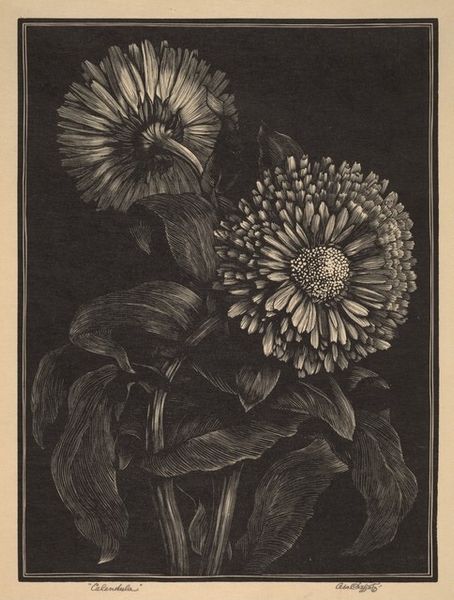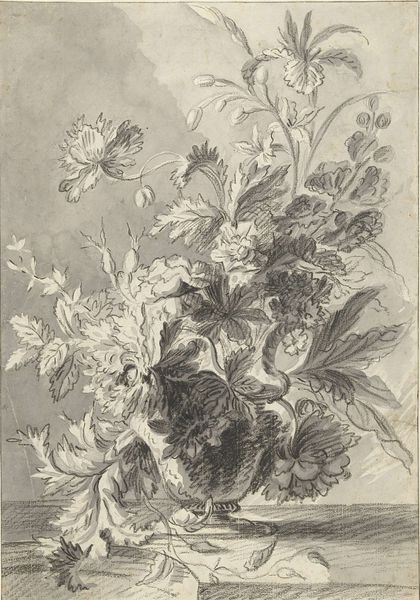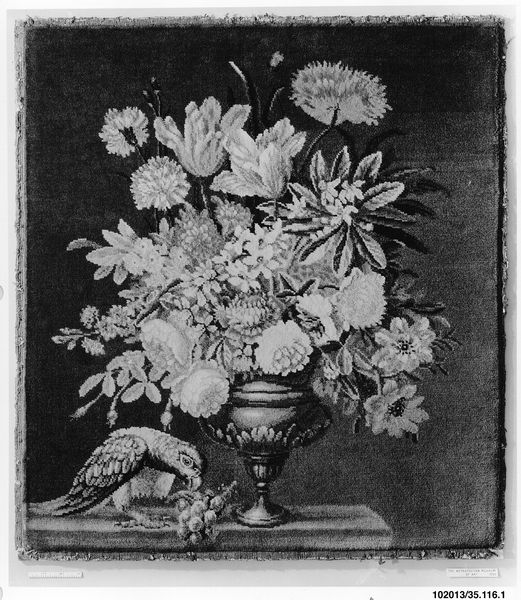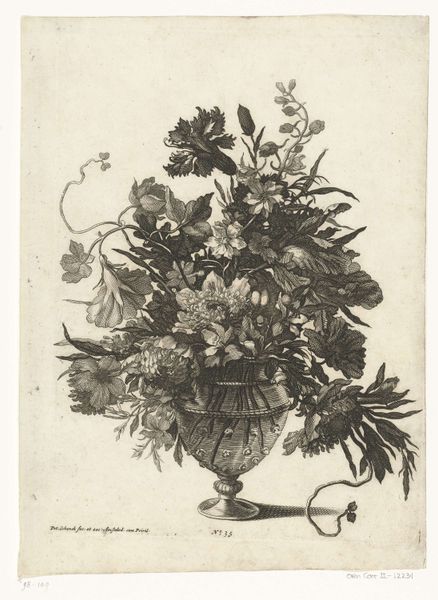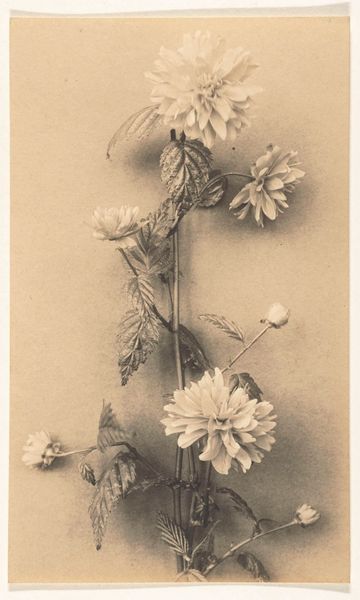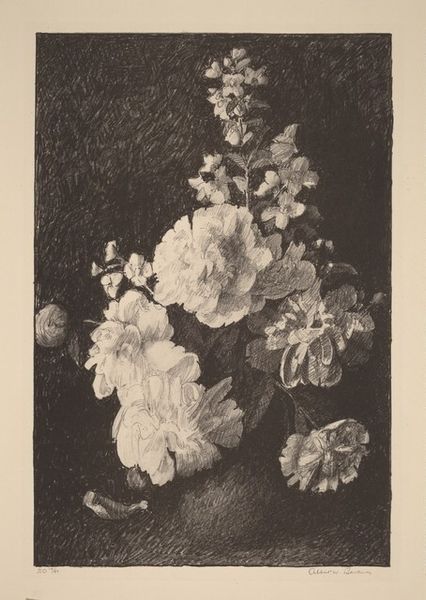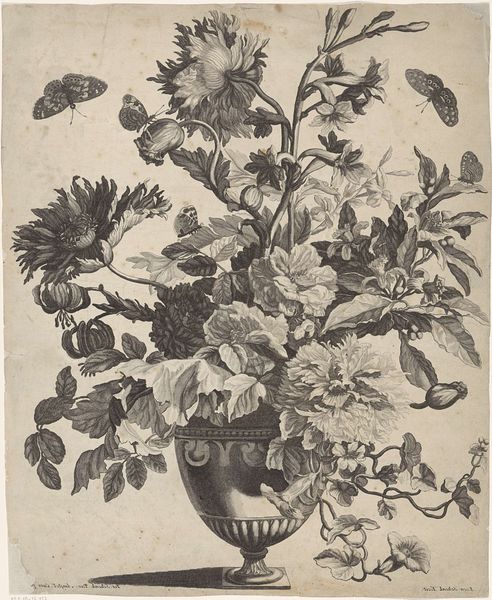
print, engraving
#
baroque
# print
#
old engraving style
#
form
#
pencil drawing
#
line
#
engraving
Dimensions: height 204 mm, width 137 mm
Copyright: Rijks Museum: Open Domain
Editor: This print, called "Bloemen in een vaas," or Flowers in a Vase, from between 1662 and 1726, is a really beautiful engraving. There's so much detail in the individual blossoms, and the textures feel so real despite being monochrome. How would you interpret the significance of the artist choosing printmaking for this still life, rather than, say, paint? Curator: That’s a fantastic question. By choosing engraving, this anonymous artist is inherently engaging with the burgeoning culture of reproduction and accessibility. We have to remember the immense labor involved in creating each individual print. Was this artist perhaps making this to serve a commercial need, perhaps catering to a specific audience? Also, consider the material: the copper plate itself, its availability, its cost…these factors directly shaped the art produced. Editor: So, it’s less about pure artistic expression and more about the means of production? Curator: Not entirely. But consider the implications: printing allowed for the mass distribution of imagery, fundamentally altering access to art and knowledge. The *labor* itself is front and center here. Was the workshop involved in the final artistic decisions? The composition feels almost deliberately idealized. Think about the cultural context - does the arrangement itself say something about wealth and power at the time? Editor: That makes me think about the consumption of art back then. Was printmaking considered "high art" or more of a craft? Curator: That distinction is precisely what’s being challenged. The print bridges that gap, making art more accessible to a wider audience, effectively disrupting the traditional hierarchy. The work’s value resides not only in its aesthetic appeal but also in its function as a commodity and as a tool for disseminating information. Editor: I hadn't considered that so much about the medium relates to its function in society, which says a lot. Thanks! Curator: Exactly. The material and its accessibility reshaped the creation, dissemination and perception of images! I learned something too, seeing how clearly you've connected the image's meaning with its historical place.
Comments
No comments
Be the first to comment and join the conversation on the ultimate creative platform.
